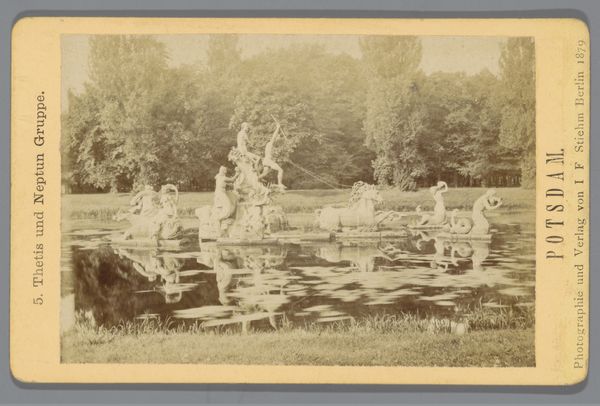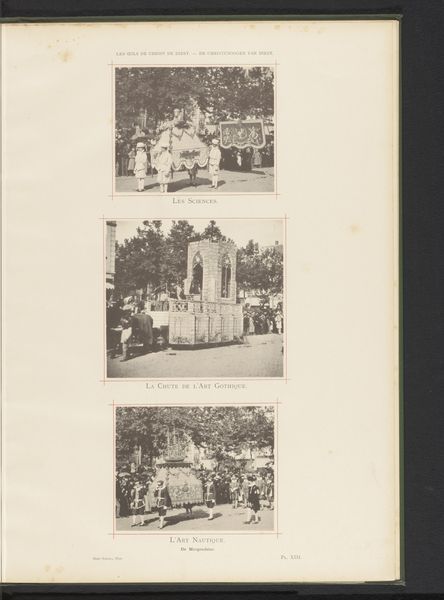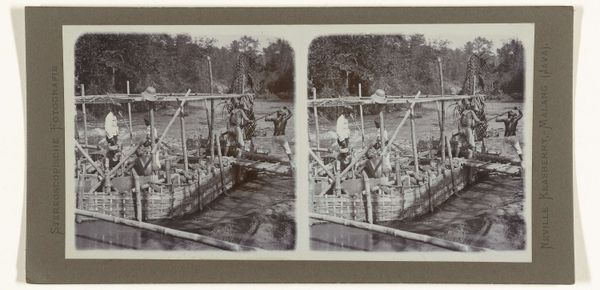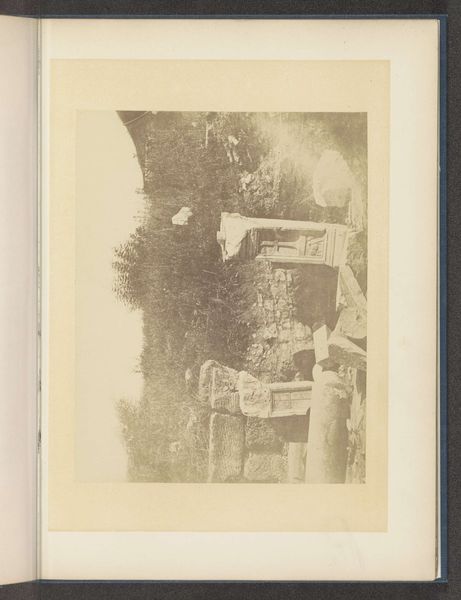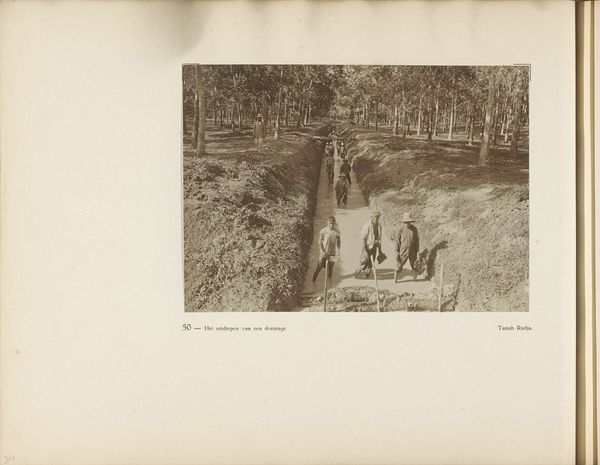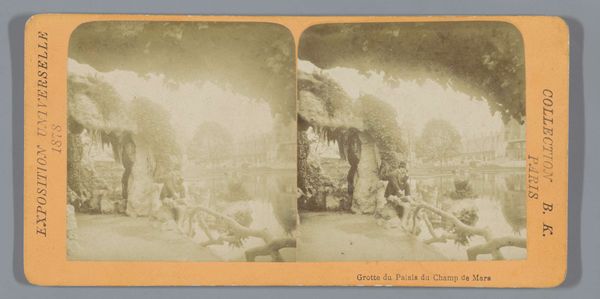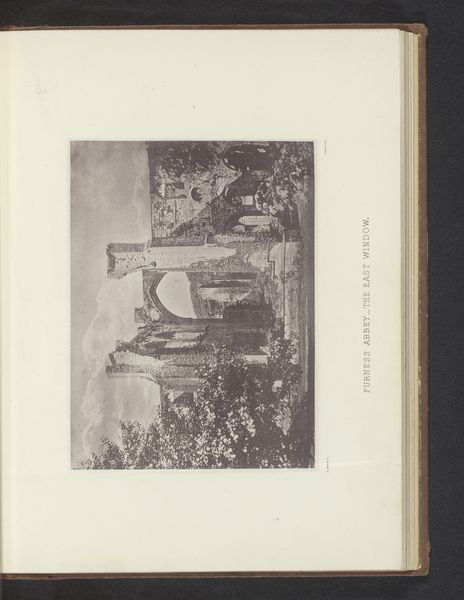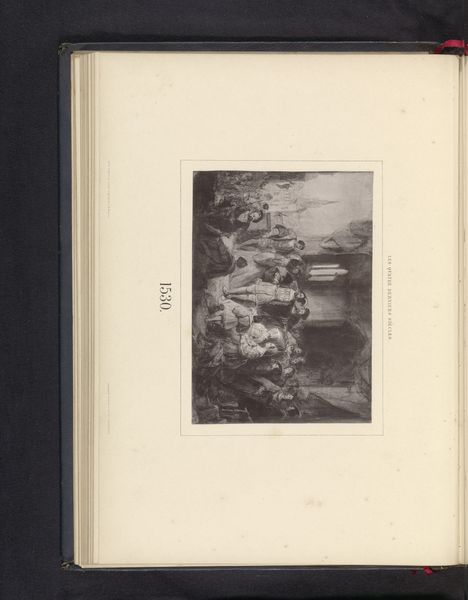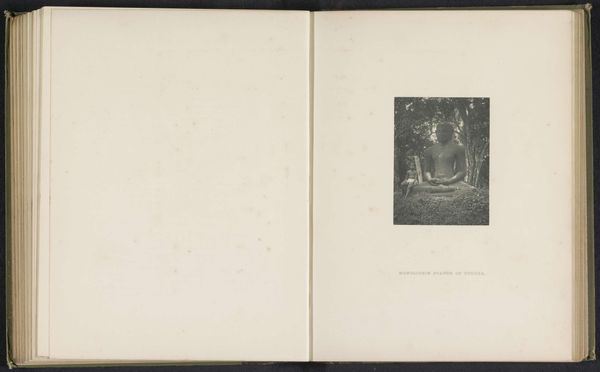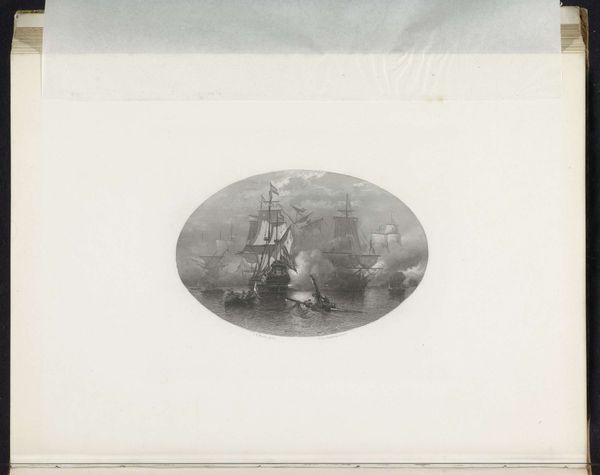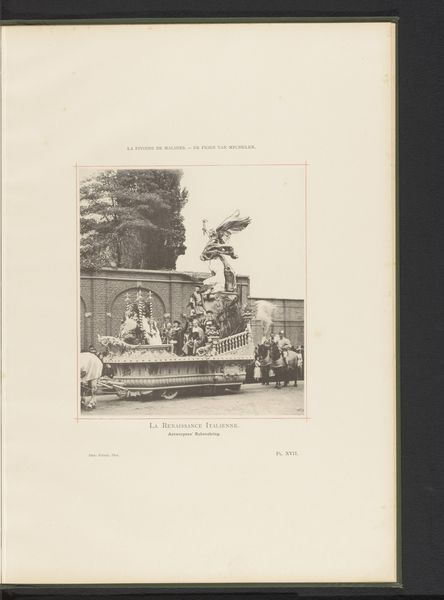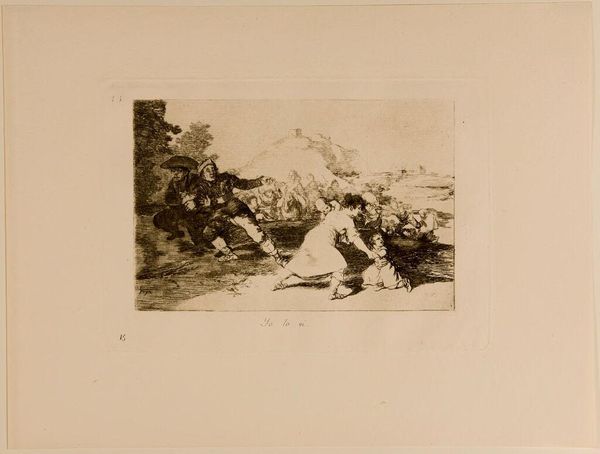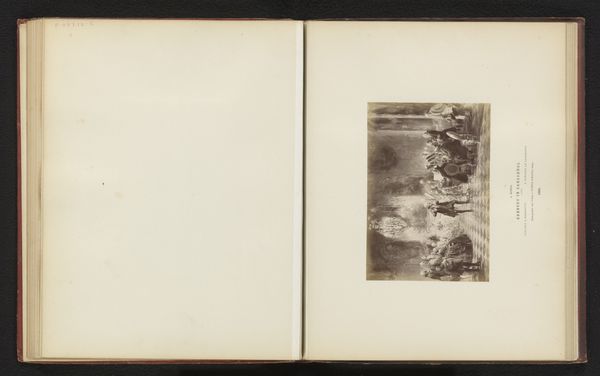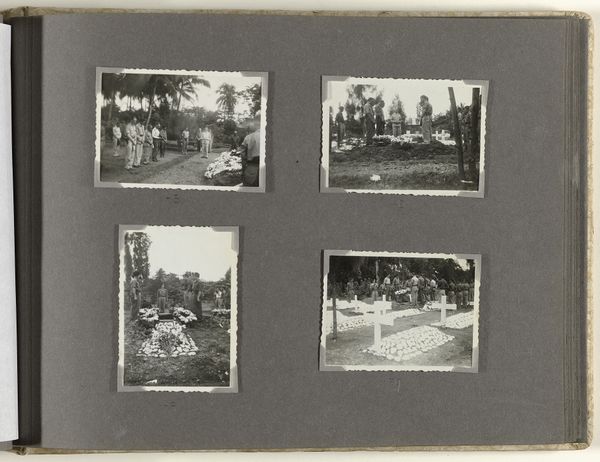
print, photography, sculpture
#
neoclassicism
# print
#
landscape
#
photography
#
sculpture
#
cityscape
#
academic-art
Dimensions: height 87 mm, width 177 mm
Copyright: Rijks Museum: Open Domain
Curator: Here we have a fascinating photograph by Hermann Selle, titled "Ruine van kasteel Scharzfels," placing it sometime between 1868 and 1890. Editor: My first impression is one of elegant decay. The image, in its monochromatic palette, carries a distinct aura of the past. It almost feels like a carefully staged memory. Curator: It's presented as a stereoscopic print, intended to create a three-dimensional effect when viewed through a stereoscope. These types of images were incredibly popular in the Victorian era, transporting viewers to far-off lands or, in this case, an imagined vision of grandeur. Editor: And that sense of depth does draw me in! Note how Selle’s choice of composition places the sculptural arrangement right at the visual center, further enhanced by the mirrored doubling of the stereo image, almost compelling my gaze. How are classical myths and motifs deployed? Curator: Absolutely, consider the symbolic weight here. Neptune, god of the sea, commanding a chariot, implies a specific understanding of power and dominion—an association between the ruling classes and classical authority. Editor: And yet, a "ruin." Selle presents a classical archetype literally decaying, which can evoke poignant historical reflection. Notice the textured water surface. Do you think it serves as an abstract painting underscoring nature's power? Curator: Precisely. Ruins were a very popular theme, fitting neatly within Romantic sensibilities; a reflection upon the transience of human endeavor against nature's timeless presence. The print as medium also influences my perception of the moment. A slower process with greater preparation time compared to instant cameras makes the presentation almost allegorical. Editor: And with photography being in its relative infancy during this time, this intersection of technology and romantic idealism is potent, framing human intervention with nature into a single experience. A photographic meditation! Curator: The details definitely highlight our continuous fascination with legacy and decline, while at the same time inviting closer observation through its meticulous layering. The ability of classical ideas to transcend temporality, filtered through Hermann Selle's specific viewpoint, remains palpable. Editor: I’m particularly moved by how a technical image delivers profound meaning about continuity through ruins. I am grateful to Selle for freezing this thought for us to experience.
Comments
No comments
Be the first to comment and join the conversation on the ultimate creative platform.
